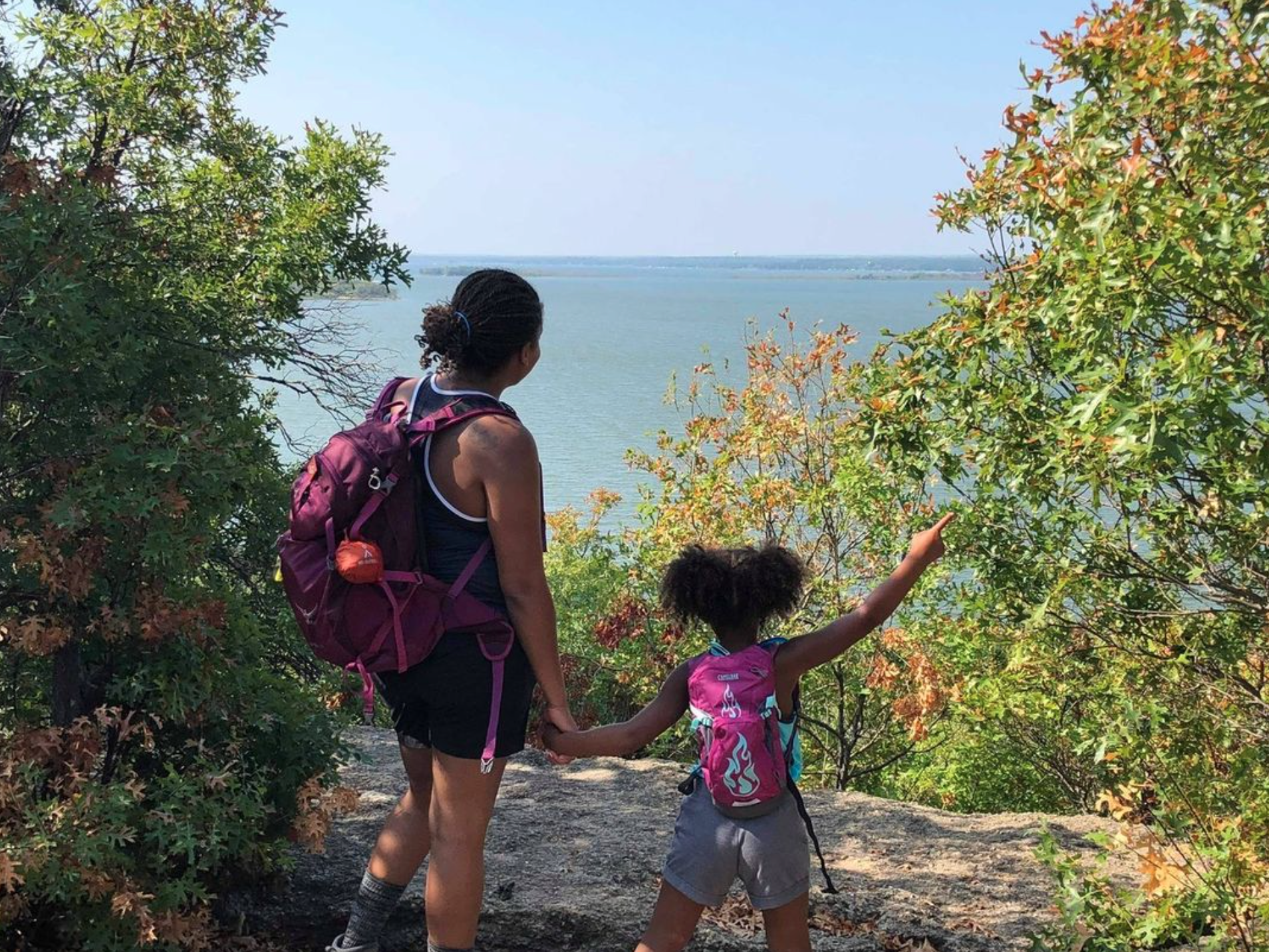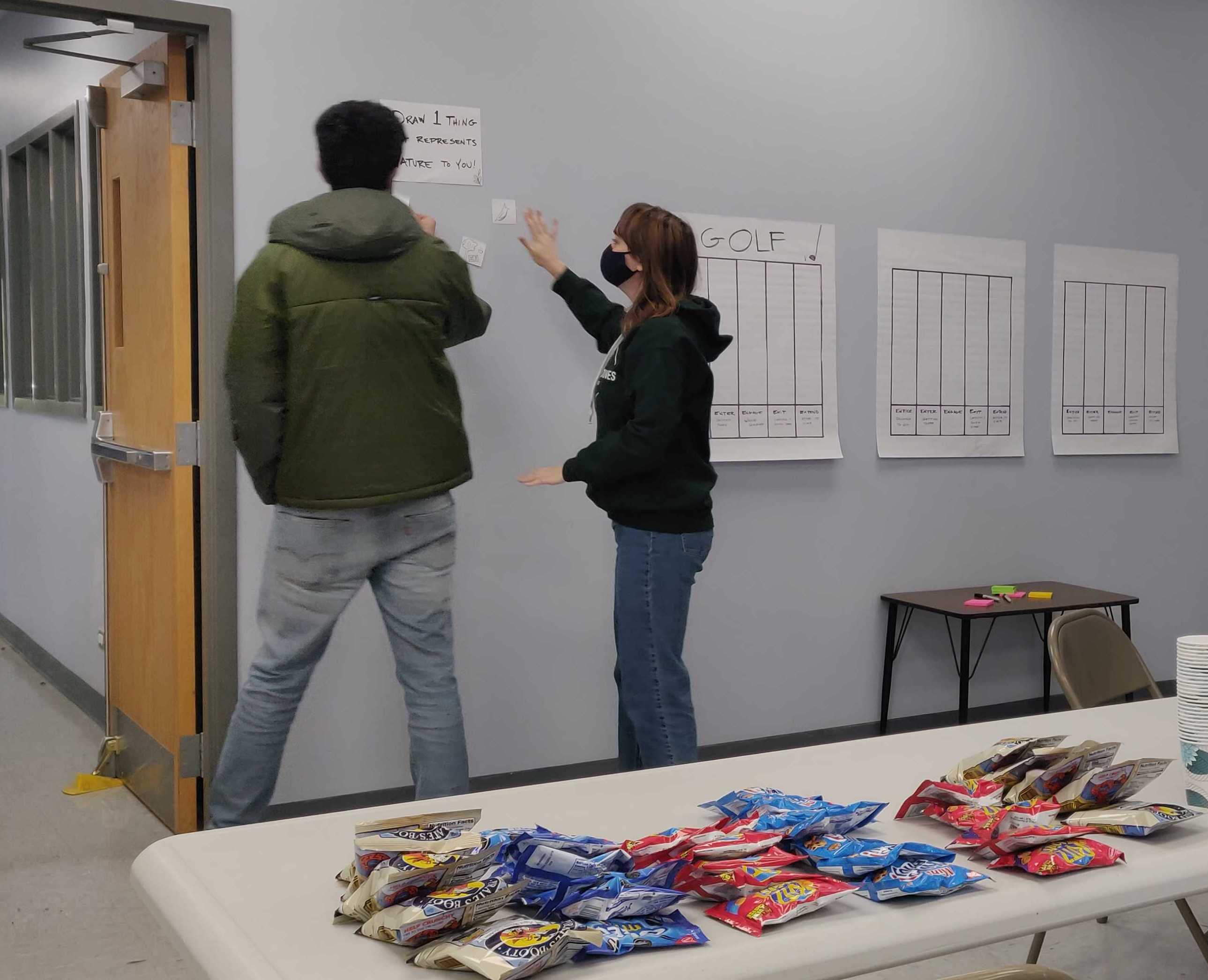A community-led case for change
Team
Design Strategy & Outreach | Kat Reiser
Researcher | Meghna Prakash
Design Support | Sahib Thukral
OPPORTUNITY
The Forest Preserve District of Cook County launched a study of three golf courses, two of which are surrounded by communities of color: River Oaks and Burnham Woods. The Forest Preserve staff identified an opportunity for the golf courses to potentially serve a broader population than they do today. While the Forest Preserve staff is determining how they may improve each site, our team engaged with the surrounding communities of color to bring their voices to the forefront of the project.

With a growing body of evidence demonstrating the benefits of spending time in natural spaces, there is a growing interest in sharing the natural world with everyone, regardless of race. Organizations in this area understand the value of spending time outdoors but may not understand the people they seek to share natural spaces with. This project seeks to include the voices of marginalized groups, specifically black and brown folks, and grow the understanding of how the preferences & perceptions of time spent in nature vary by demographic factors in specific settings.

METHODS
Grounding in the community's past
Historically, the United States has systematically segregated and excluded people of color from public lands, natural areas, and places for recreation. Despite the viciousness and continuing acts of racist violence and segregation, African Americans continued to seek out nature and fight for their right to access public parks, as seen in multiple instances throughout the history of recreation in Chicago.
Contextualizing Cook County Forest Preserve's present
We performed quick assessments of the capabilities of partner organizations in serving marginalized groups. We observed the casual experiences of marginalized groups interacting with the Forest Preserves of Cook County by attending community events at the Sands Ridge Nature Center and River Oaks golf course.
Bringing together people with lived experience and county leaders
Community members with lived experience, professionals from cook county, and our team acting as provocateurs came together in a series of two workshops focused on identifying the major barriers and benefits to equitable use of forest preserves.


Bringing Power Dynamics to the Forefront of Awareness
Our team mapped out the relationships between all the parties utilizing the land under question. We identified the Indigo Golf Partners, the private corporation running the golf course as they are, as a group that may show the most resistance to changes in these parks and who may have the most to lose. This information was kept in mind as we built our codesign team. County officials were reminded throughout the project that we were biasing all our teams towards the nearby residents of color rather than private interests.
Highlighting Shared Motivations
Understanding these four distinct groups of people helped the team better recognize the experiences of people visiting the forest preserves by identifying their needs and desires. Through our workshops, we discovered several critical relationships between these groups. The different groupings revealed the motivations of those interacting with visitors to the forest preserves. Observing and mapping the relationships between these stakeholders, the Cook County Forest Preserve team became more aware of several critical connections and conflicts between themselves and those they sought to serve.


Understanding Which Outdoor Recreation Works
The Co-Design workshop revealed the selected outdoor activities that BIPOC and Latinx communities feel most comfortable engaging in and do so often. Upon understanding their rationale and choice of activities, cost to play and type of experience (group or shared) were the defining parameters of their experience and frequency.
The most commonly and frequently played activities are group experiences that are affordable or entirely free of cost. The activities that were done alone, such as fishing or enjoying a trail, raised concerns about safety and police confrontations. The activities that were paid for and required an initial investment, such as golf, had fewer people participating due to the lack of availability of golf equipment.
RESULTS
Collective Understanding through Insights
The goal of this work was the following insights were synthesized sentiments from residents aiming to fill the gaps in knowledge for Forest Preserve stakeholders while simultaneously building out relationships between residents and community members. With these insights creating the foundation for a shared understanding, our team handed this project over to another set of designers to begin the design phase for the future of the two golf courses.

Sensitivity to High Costs
Historical systems of racism such as Economic segregation, redlining, and racial discrimination in policy framework have long kept the BIPOC communities away from freely accessing natural outdoor places. The manifestation of these policies and frameworks is in the form of cost barriers.

Apprehensive about Unsafe Surroundings
The concerns within the BIPOC communities, through generational experiences of racism, have become deeply ingrained to the point where it has become a part of everyday life for them to think about how to handle certain experiences that a white individual might not consider.

Desire for Shared Experiences
The people of color we spoke with opted for affordable group experiences, as these activities provide a sense of community and shared experiences. Whether it's playing sports, grilling, dancing, or just hanging out, these communal activities provide a space for families and friends to bond and form meaningful connections.
Do you want to compare notes on the best antiracist design methods?
Kat Reiser | Made with ❤️ in Chicago | 2021